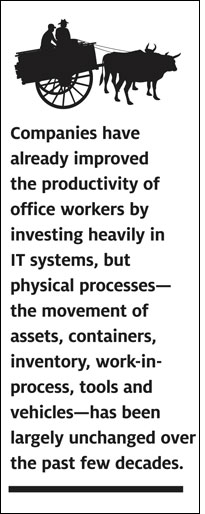The year started off with considerable optimism in the business community. Profits were strong, the global economy appeared to be gaining momentum and consumer confidence was on the rise. What a difference a few months make. The U.S. economy is growing at an anemic rate, and partisan bickering in Washington has thrown into question whether the United States has a stable government. European countries are also struggling with financial challenges. Greece has already needed a bailout, and concerns abound that Spain and Italy will not be able to meet their financial obligations.
The negative news has businesspeople worried, and the unfortunate reality is the global economy will face slower growth over the next five to 10 years. U.S. consumers are loaded down with debt, including credit card debt, car loans and student loans. In addition, many homeowners are still underwater—the value of their mortgages is greater than the value of their houses. Consumers in many European countries are in similar situations.
This means businesses can’t count on consumers, struggling under the weight of all the money they’ve borrowed over the past 10 years, to start spending aggressively again until they’ve paid down their debts and the housing crisis has stabilized. And business can’t count on governments to increase spending to partially offset the reduction in consumer spending. Both national and local governments in Europe and the United States are cutting spending, which is increasing unemployment and slowing economic growth.
So the question businesses now face is, how do we increase profits? The answer, of course, is to become leaner and more efficient. But that won’t be easy. In the wake of the financial meltdown in 2008, companies undertook drastic cuts. Many laid off workers or reduced salaries. They moved some departments to low-wage countries, and closed or sold off business units that were a drag on profits. In other words, most actions that could dramatically decrease costs have already been taken (which is why corporate profits have remained healthy even as the global economy has shrunk).
With costs cut to the bone, where can companies turn now to increase savings? The answer: New technologies, including RFID.
Companies are already looking at some options for reducing costs. Many are moving toward cloud computing to reduce their IT costs. Others are using data analytics to improve their operations, better understand their customers’ needs and deliver the right product mix. But RFID stands out as the one technology that can deliver significant long-term savings.
That’s because companies have already improved the productivity of office workers by investing heavily in IT systems, but physical processes—the movement of assets, containers, inventory, work-in-process, tools and vehicles—has been largely unchanged over the past few decades. RFID is the only technology that allows companies to identify and track objects in motion in the physical world, and then improve the way they manage those objects.
Immediate gains can be achieved—as well as longer-term savings—when companies build out a robust RFID infrastructure. For example, a company might be able to set up a relatively simple system to quickly reduce the amount it spends on underused rental equipment. In the longer term, the system could be expanded to reduce inventory levels, close warehouses and improve shipping accuracy (and customer satisfaction).
Many companies conducted RFID pilots from 2005 to 2010 and found the technology not ready for prime time. Today, RFID is still not plug-and-play, but the technology and applications have improved to the point at which companies are seeing savings and getting a return on their investment. Here are five ways RFID can reduce costs in the near and long terms.
Returnable container tracking: Many manufacturers and distributors use containers or totes to store products as they move through the supply chain. Typically, 7 percent to 10 percent of containers are replaced annually, adding up for many companies to hundreds of thousands or even millions of dollars. Some manufacturers are deploying RFID systems, either active or passive, to track returnable containers and reduce shrinkage. Those that ship containers to partners find they are better able to get those containers back, and they can identify the partners that are returning damaged containers.
IT asset tracking: Companies in the United States must track and account for all their servers and storage devices. Taking inventory is slow and labor-intensive, because workers must scan bar codes on the back of each device. The bar codes are often small, hard to find and obstructed by wires. With a passive ultrahigh-frequency RFID system, workers can take inventory in roughly one-tenth the time it takes with bar codes. In addition, taking inventory more often allows IT managers to locate underused assets, which can be redeployed or decommissioned.
Material handling: Manufacturers typically deploy a significant amount of labor to receive goods and enter them into inventory. In most cases, workers must scan bar codes on parts or raw materials arriving at a manufacturing facility, or finished inventory arriving at a warehouse. Retailers also have to deploy labor to receive goods at distribution centers and stores. Some manufacturers have begun providing suppliers with RFID tags they can associate with parts, raw materials or products and place on shipments. The supplier reads the tags before shipping to confirm the accuracy of the shipment, and then the tags are read when the goods are received into inventory, which reduces labor costs associated with receiving by eightfold or more. The reduction in shipping errors also reduces the labor associated with exception handling.
Rental equipment tracking: Many hospitals and some manufacturers rent equipment used in everyday operations. By tracking this equipment with an RFID system, companies can greatly reduce ongoing rental costs. That’s because assets are often underused. Northrop Grumman saved $750,000 annually on the rental cost of one type of tool rented from the government for the manufacture of fighter aircraft. Construction and mining companies also employ RFID to track rental equipment used on job sites.
Tracking work-in-process: Many manufacturers have adopted Six Sigma strategies to better track manufacturing processes, minimize waste and reduce production flaws. But many have not, and complex manufacturing systems are slowed by failure to locate a particular subassembly or part when it’s needed. Smart companies are deploying RFID on subassemblies, large parts and parts bins, to increase throughput with less labor involved in locating parts and subassemblies. Killdeer Mountain Manufacturing, which makes aerospace components, deployed a work-in-process application to track orders for Boeing. The company estimates it saves more than $160,000 annually on one production line due to the improvements.
These are just several of the RFID solutions companies are deploying now to reduce costs. A few forward-thinking companies, such as Airbus and John Deere, plan to stitch together individual RFID systems that deliver a quick return on investment into an infrastructure that lets them add new applications that further reduce costs. In this era of global stagnation, these companies likely will be among the most profitable.



